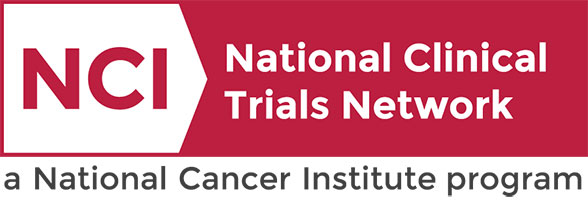Patient Search
 |
 |
|
KaCrole Higgins was diagnosed with breast cancer in 2020. “In May 2020, I found a lump in my breast. I cried. By June, it was diagnosed as breast cancer, triple positive, stage 1A. While getting this cancer diagnosis was devastating, it also became an opportunity. Suddenly, the cancer gave me clarity. It gave me clarity about what was important, what was good in my life, what was toxic in my life, and what I needed to do.” Click below to read more of KaCrole’s story |
If Landon Ryan had been diagnosed with bilateral retinoblastoma 10, 20 or 30 years ago, she might not be here today with nearly perfect vision.Thanks to recent improvements in the treatment for this rare form of cancer that almost exclusively affects children under the age of 5, the diagnosis had the power to change Landon’s life when she was 11 months old, but not to take it — or her eyesight. Click below to learn more about Landon and her story. https://momentum.vicc.org/2022/04/brighter-outlook/ |
A Study of ASP3082 in Adults With Advanced Solid Tumors
Phase I
Phase I
This is an open-label study. This means that people in this study and clinic staff will know that they will receive ASP3082. The study aims to check how safe and well-tolerated ASP3082 is for people with advanced solid tumors that have a specific mutation called KRAS G12D.
This study will be in 2 parts.
In Part 1, different small groups of people will receive lower to higher doses of ASP3082 by itself, or together with cetuximab. Any medical problems will be recorded at each dose. This is done to find suitable doses of ASP3082, by itself or together with cetuximab, to use in Part 2 of the study. The first group will receive the lowest dose of ASP3082. A medical expert panel will check the results from this group and decide if the next group can receive a higher dose of ASP3082. The panel will do this for each group until all groups have received ASP3082 (by itself or together with cetuximab) or until suitable doses have been selected for Part 2.
In Part 2, ASP3082 will be given in by itself, or in combination with the other study treatments.
Study treatments will be given through a vein. This is called an infusion. Each treatment cycle is 21 or 28 days long. They will continue treatment until: they have medical problems from the treatment they can't tolerate; their cancer gets worse; they start other cancer treatment; or they ask to stop treatment.
This study will be in 2 parts.
In Part 1, different small groups of people will receive lower to higher doses of ASP3082 by itself, or together with cetuximab. Any medical problems will be recorded at each dose. This is done to find suitable doses of ASP3082, by itself or together with cetuximab, to use in Part 2 of the study. The first group will receive the lowest dose of ASP3082. A medical expert panel will check the results from this group and decide if the next group can receive a higher dose of ASP3082. The panel will do this for each group until all groups have received ASP3082 (by itself or together with cetuximab) or until suitable doses have been selected for Part 2.
In Part 2, ASP3082 will be given in by itself, or in combination with the other study treatments.
Study treatments will be given through a vein. This is called an infusion. Each treatment cycle is 21 or 28 days long. They will continue treatment until: they have medical problems from the treatment they can't tolerate; their cancer gets worse; they start other cancer treatment; or they ask to stop treatment.
Phase I
I
Berlin, Jordan
NCT05382559
VICCPHI2207
A Study of E7386 in Combination With Other Anticancer Drug(s) in Participants With Solid Tumor
Multiple Cancer Types
The primary objective of this study is to assess the safety and tolerability and to determine the recommended Phase 2 dose (RP2D) of E7386 in combination with other anticancer drug(s), and to determine the optimal dose of E7386 in combination with lenvatinib in endometrial carcinoma (EC) (for EC Dose Optimization Part only).
Gynecologic,
Liver,
Phase I
I
Crispens, Marta
NCT04008797
VICC-DTPHI23106
Safety and Tolerability of Ziftomenib Combinations in Patients With Relapsed/Refractory Acute Myeloid Leukemia
The safety, tolerability, and antileukemic response of ziftomenib in combination with standard of care treatments for patients with relapsed/refractory acute myeloid leukemia will be examined with the following agents: FLAG-IDA, low-dose cytarabine, and gilteritinib.
Not Available
I
Fedorov, Kateryna
NCT06001788
VICC-DTHEM23484P
Study of CHS-114 in Participants With Advanced Solid Tumors
Head/Neck
Head/Neck
This is a Phase 1, open-label, first-in-human, dose-escalation and expansion study of CHS-114, a monoclonal antibody that targets CCR8, as a monotherapy in patients with solid tumors.
Head/Neck
I
Choe, Jennifer
NCT05635643
VICC-DTHAN23184P
Dose Optimization and Expansion Study of DFV890 in Adult Patients With Myeloid Diseases
Hematologic
Hematologic
Study CDFV890G12101 is an open-label, phase 1b, multicenter study with a randomized two-dose optimization part, and a dose expansion part consisting of three groups evaluating DFV890 in patients with myeloid diseases. The purpose of this study is to assess the safety, tolerability, pharmacokinetics, pharmacodynamics, efficacy and recommended dose for single agent DFV890 in patients with lower risk (LR: very low, low or intermediate risk) myelodysplastic syndromes (LR MDS), lower risk chronic myelomonocytic leukemia (LR CMML) and High-Risk Clonal Cytopenia of Undetermined Significance (HR CCUS).
Hematologic
I
Kishtagari, Ashwin
NCT05552469
VICC-DTHEM23007P
Eltanexor and Venetoclax in Relapsed or Refractory Myelodysplastic Syndrome and Acute Myeloid Leukemia
Multiple Cancer Types
This phase I trial tests the safety, side effects, and best dose of eltanexor in combination with venetoclax for the treatment of patients with myelodysplastic syndrome (MDS) or acute myeloid leukemia (AML) that has come back after a period of improvement (relapsed) or that has not responded to previous treatment (refractory). Eltanexor works by trapping "tumor suppressing proteins" within the cell, thus causing the cancer cells to die or stop growing. Venetoclax is in a class of medications called B-cell lymphoma-2 (BCL-2) inhibitors. It may stop the growth of cancer cells by blocking Bcl-2, a protein needed for cancer cell survival. Giving eltanexor together with venetoclax may be safe, tolerable and/or effective in treating patients with relapsed or refractory MDS or AML.
Leukemia,
Myelodysplastic Syndrome,
Phase I
I
Ball, Somedeb
NCT06399640
VICC-VCHEM23008P
Claudin 18.2-Targeted Chimeric Antigen Receptor T-cells in Subjects With Unresectable, Locally Advanced, or Metastatic Gastric, Gastroesophageal Junction (GEJ), Esophageal, or Pancreatic Adenocarcinoma
Multiple Cancer Types
This is a Phase 1, Open-Label, Dose Escalation and Expansion, Multicenter Study of Claudin 18.2-Targeted Chimeric Antigen Receptor T-cells in Subjects with Unresectable, Locally Advanced, or Metastatic Gastric, Gastroesophageal Junction (GEJ), Esophageal, or Pancreatic Adenocarcinoma
Esophageal,
Gastric/Gastroesophageal,
Pancreatic,
Phase I
I
Gibson, Mike
NCT05539430
VICC-PHI22112
Evaluating the Use of Dual Imaging Techniques for Detection of Disease in Patients With Head and Neck Cancer
Phase I
Phase I
This phase I trial evaluates the safety and effectiveness of using two imaging techniques, indium In 111 panitumumab (111In-panitumumab) with single photon emission computed tomography (SPECT)/computed tomography (CT) and panitumumab-IRDye800 fluorescence imaging during surgery (intraoperative), to detect disease in patients with head and neck cancer. 111In-panitumumab is an imaging agent made of a monoclonal antibody that has been labeled with a radioactive molecule called indium In 111. The agent targets and binds to receptors on tumor cells. This allows the cells to be visualized and assessed with SPECT/CT imaging techniques. SPECT is special type of CT scan in which a small amount of a radioactive drug is injected into a vein and a scanner is used to make detailed images of areas inside the body where the radioactive material is taken up by the cells. CT is an imaging technique for examining structures within the body by scanning them with x-rays and using a computer to construct a series of cross-sectional scans along a single axis. Panitumumab-IRDye800 is an imaging agent composed of panitumumab, a monoclonal antibody, linked to a fluorescent dye called IRDye800. Upon administration, panitumumab-IRDye800 targets and binds to receptors on tumor cells. This allows the tumor cells to be detected using fluorescence imaging during surgery. Adding 111In-panitumumab SPECT/CT imaging to intraoperative panitumumab-IRDye800 fluorescence imaging may be more effective at detecting disease in patients with head and neck cancer.
Phase I
I
Rosenthal, Eben
NCT05945875
VICC-EDHAN23204P
Evaluating 111In Panitumumab for Nodal Staging in Head and Neck Cancer
Multiple Cancer Types
This phase I trial tests the safety and effectiveness of indium In 111 panitumumab (111In-panitumumab) for identifying the first lymph nodes to which cancer has spread from the primary tumor (sentinel lymph nodes) in patients with head and neck squamous cell carcinoma (HNSCC) undergoing surgery. The most important factor for survival for many cancer types is the presence of cancer that has spread to the lymph nodes (metastasis). Lymph node metastases in patients with head and neck cancer reduce the 5-year survival by half. Sometimes, the disease is too small to be found on clinical and imaging exams before surgery. 111In-panitumumab is in a class of medications called radioimmunoconjugates. It is composed of a radioactive substance (indium In 111) linked to a monoclonal antibody (panitumumab). Panitumumab binds to EGFR receptors, a receptor that is over-expressed on the surface of many tumor cells and plays a role in tumor cell growth. Once 111In-panitumumab binds to tumor cells, it is able to be seen using an imaging technique called single photon emission computed tomography/computed tomography (SPECT/CT). SPECT/CT can be used to make detailed pictures of the inside of the body and to visualize areas where the radioactive drug has been taken up by the cells. Using 111In-panitumumab with SPECT/CT imaging may improve identification of sentinel lymph nodes in patients with head and neck squamous cell cancer undergoing surgery.
Head/Neck,
Phase I
I
Rosenthal, Eben
NCT05901545
VICC-EDHAN23201P
Clinical Trial of an Anti-cancer Drug, CA-4948 (Emavusertib), in Combination With Chemotherapy Treatment (FOLFOX Plus Bevacizumab) in Metastatic Colorectal Cancer
Multiple Cancer Types
This phase I trial studies the side effects and best dose of CA-4948 when given together with fluorouracil, leucovorin, oxaliplatin (FOLFOX) plus bevacizumab in treating patients with colorectal cancer that has spread from where it first started (primary site) to other places in the body (metastatic). CA-4948 may stop the growth of tumor cells by blocking some of the enzymes needed for cell growth. The chemotherapy drugs used in FOLOX, fluorouracil and oxaliplatin, work in different ways to stop the growth of tumor cells, either by killing the cells, by stopping them from dividing, or by stopping them from spreading. Leucovorin is used with fluorouracil to treat colorectal cancer. Bevacizumab is in a class of medications called anti-angiogenic agents. It works by stopping the formation of blood vessels that bring oxygen and nutrients to the tumor. This may slow the growth and spread of the tumor. Giving CA-4948 with FOLFOX plus bevacizumab may be safe, tolerable and/or effective in treating patients with metastatic colorectal cancer.
Colon,
Phase I,
Rectal
I
Ciombor, Kristen
NCT06696768
ETCGIP10655


